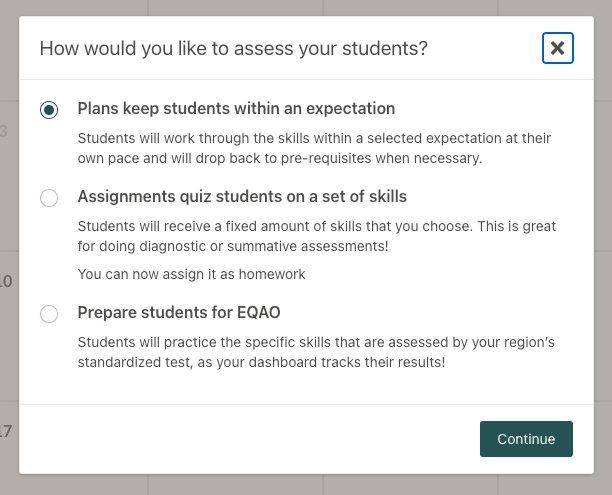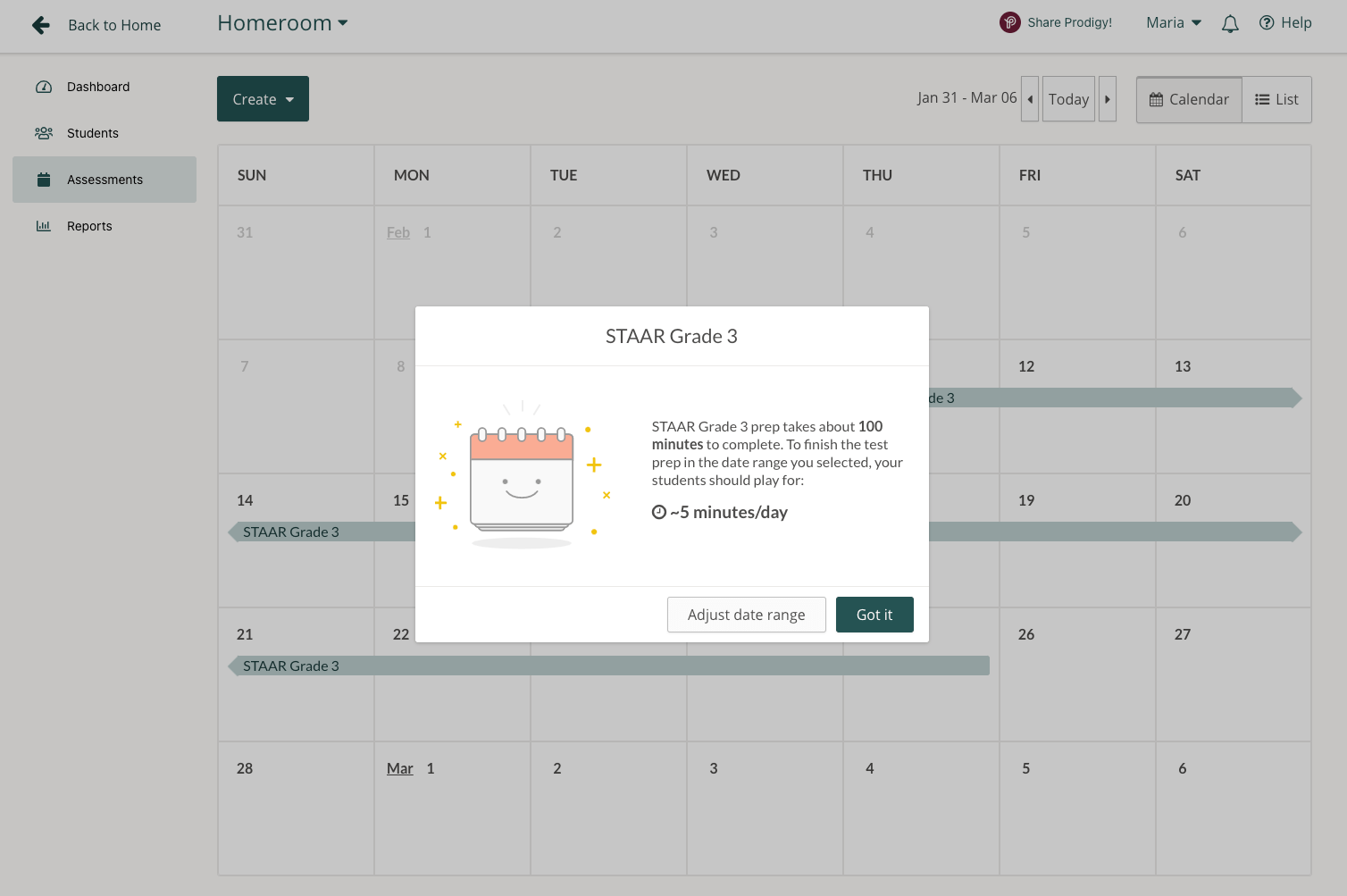Gr7 Mathematics Test Florida Standards Assessments Answers
How do you use the differenttypes of assessment in your classroom to promote student learning?
School closures and remote or hybrid learning environments have posed some challenges for educators, but motivating students to learn and grow remains a constant goal.
Some students have lost a portion of their academic progress. Assessing students in meaningful ways can help motivate and empower them to grow as they become agents of their own learning.
But testing can contribute to math anxiety for many students. Assessments can be difficult to structure properly and time-consuming to grade. And as a teacher, you know that student progress isn't just a number on a report card.
There's so much more to assessments than delivering an end-of-unit exam or prepping for a standardized test. Assessments help shape the learning process at all points, and give you insights into student learning. As John Hattie, a professor of education and the director of the Melbourne Education Research Institute at the University of Melbourne, Australia puts it:
The major purpose of assessment in schools should be to provide interpretative information to teachers and school leaders about their impact on students, so that these educators have the best information possible about what steps to take with instruction and how they need to change and adapt. So often we use assessment in schools to inform students of their progress and attainment. Of course this is important, but it is more critical to use this information to inform teachers about their impact on students. Using assessments as feedback for teachers is powerful. And this power is truly maximized when the assessments are timely, informative, and related to what teachers are actually teaching.
What's the purpose of different types of assessment?

Different types of assessments can help you understand student progress in various ways. This understanding can inform the teaching strategies you use, and may lead to different adaptations.
In your classroom, assessments generally have one of three purposes:
- Assessmentof learning
- Assessmentfor learning
- Assessmentaslearning
Assessment of learning
You can use assessments to help identify if students are meeting grade-level standards.
Assessments of learning are usuallygrade-based, and can include:
- Exams
- Portfolios
- Final projects
- Standardized tests
They often have a concrete grade attached to them that communicates student achievement to teachers, parents, students, school-level administrators and district leaders.
Common types of assessment of learning include:
- Summative assessments
- Norm-referenced assessments
- Criterion-referenced assessments
Assessment for learning
Assessments for learning provide you with a clear snapshot of student learning and understandingas you teach -- allowing you to adjust everything from your classroom management strategies to your lesson plans as you go.
Assessments for learning should always beongoing and actionable. When you're creating assessments, keep these key questions in mind:
- What do students still need to know?
- What did students take away from the lesson?
- Did students find this lesson too easy? Too difficult?
- Did my teaching strategies reach students effectively?
- What are students most commonly misunderstanding?
- What did I most want students to learn from this lesson? Did I succeed?
There are lots of ways you can deliver assessments for learning, even in a busy classroom.We'll cover some of them soon!
For now, just remember these assessments aren't only for students -- they're to provide you with actionable feedback to improve your instruction.
Common types of assessment for learning include formative assessments and diagnostic assessments.
Assessment as learning
Assessment as learningactively involves students in the learning process. It teaches critical thinking skills, problem-solving and encourages students to set achievable goals for themselves and objectively measure their progress.
They can help engage students in the learning process, too! One study "showed that in most cases the students pointed out the target knowledge as the reason for a task to be interesting and engaging, followed by the way the content was dealt with in the classroom."
Another found:
"Students develop an interest in mathematical tasks that they understand, see as relevant to their own concerns, and can manage. Recent studies of students' emotional responses to mathematics suggest that both their positive and their negative responses diminish as tasks become familiar and increase when tasks are novel" Douglas B. McLeod
Some examples of assessment as learning include ipsative assessments, self-assessments and peer assessments.
6 Types of assessment to use in your classroom
There's a time and place for every type of assessment. Keep reading to find creative ways of delivering assessments and understanding your students' learning process!
1. Diagnostic assessment

Let's say you're starting a lesson on two-digit multiplication. To make sure the unit goes smoothly, you want to know if your students have mastered fact families, place value and one-digit multiplication before you move on to more complicated questions.
When you structurediagnostic assessments around your lesson,you'll get the information you need to understand student knowledge and engage your whole classroom.
Some examples to try include:
- Short quizzes
- Journal entries
- Student interviews
- Student reflections
- Classroom discussions
- Graphic organizers (e.g., mind maps, flow charts, KWL charts)
Diagnostic assessments can also help benchmark student progress. Consider giving the same assessment at the end of the unit so students can see how far they've come!
Using Prodigy for diagnostic assessments
One unique way of delivering diagnostic assessments is to use a game-based learning platform that engages your students.
Prodigy's assessments tool helps you align the math questions your students see in-game with the lessons you want to cover.

To set up a diagnostic assessment, use your assessments tool to create aPlan that guides students through a skill. This adaptive assessment will support students with pre-requisites when they need additional guidance.
Create my free teacher account now"Current research indicates that acquired knowledge is not simply a collection of concepts and procedural skills filed in long-term memory. Rather, the knowledge is structured by individuals in meaningful ways, which grow and change over time."
In other words, meaningful learning is like a puzzle — having the pieces is one thing, but knowing how to put it together becomes an engaging process that helps solidify learning.
Formative assessments help you track how student knowledge is growing and changing in your classroom in real-time. While it requires a bit of a time investment — especially at first — the gains are more than worth it.
A March 2020 study found that providing formal formative assessment evidence such as written feedback and quizzes within or between instructional units helped enhance the effectiveness of formative assessments.
Some examples of formative assessments include:
- Portfolios
- Group projects
- Progress reports
- Class discussions
- Entry and exit tickets
- Short, regular quizzes
- Virtual classroom tools like Socrative or Kahoot!
When running formative assessments in your classroom, it's best to keep themshort, easy to grade and consistent. Introducing students to formative assessments in a low-stakes way can help you benchmark their progress and reduce math anxiety.
Find more engaging formative assessment ideas here!
How Prodigy helps you deliver formative assessments
Prodigy makes it easy to create, deliver and grade formative assessments that keep your students engaged with the learning process and provide you with actionable data to adjust your lesson plans.
Use your Prodigy teacher dashboard to create anAssignment and make formative assessments easy!
Assignments assess your students on a particular skill with a set number of questions and can be differentiated for individual students or groups of students.

Summative assessments measure student progress as an assessment of learning. Standardized tests are a type of summative assessment andprovide data for you, school leaders and district leaders.
They can assist with communicating student progress, but they don't always give clear feedback on the learning process and can foster a "teach to the test" mindset if you're not careful.
Plus, they're stressful for teachers. One Harvard survey found 60% of teachers said "preparing students to pass mandated standardized tests" "dictates most of" or "substantially affects" their teaching.
Sound familiar?
But just because it's a summative assessment, doesn't mean it can't be engaging for students and useful for your teaching. Try creating assessments that deviate from the standard multiple-choice test, like:
- Recording a podcast
- Writing a script for a short play
- Producing an independent study project
No matter what type of summative assessment you give your students, keep some best practices in mind:
- Keep it real-world relevant where you can
- Make questions clear and instructions easy to follow
- Give a rubric so students know what's expected of them
- Create your final test after, not before, teaching the lesson
- Try blind grading: don't look at the name on the assignment before you mark it
Use these summative assessment examples to make them effective and fun for your students!
Preparing students for summative assessments with Prodigy

4. Ipsative assessments
How many of your students get a bad grade on a test and get so discouraged they stop trying?
Ipsative assessmentsare one of the types of assessmentaslearning thatcompares previous results with a second try, motivating students to set goals and improve their skills.
When a student hands in a piece of creative writing, it's just the first draft. They practice athletic skills and musical talents to improve, but don't always get the same chance when it comes to other subjects like math.
A two-stage assessment framework helps students learn from their mistakes and motivates them to do better. Plus, it removes the instant gratification of goals and teaches students learning is a process.
You can incorporate ipsative assessments into your classroom with:
- Portfolios
- A two-stage testing process
- Project-based learning activities
One study on ipsative learning techniques found that when it was used with higher education distance learners, it helped motivate students and encouraged them to act on feedback to improve their grades.
In Gwyneth Hughes' book, Ipsative Assessment: Motivation Through Marking Progress, she writes: "Not all learners can be top performers, but all learners can potentially make progress and achieve a personal best. Putting the focus onto learning rather than meeting standards and criteria can also be resource efficient."
While educators might use this type of assessment during pre- and post-test results, they can also use it in reading instruction. Depending on your school's policy, for example, you can record a student reading a book and discussing its contents. Then, at another point in the year, repeat this process. Next, listen to the recordings together and discuss their reading improvements.
What could it look like in your classroom?
5. Norm-referenced assessments

Norm-referenced assessments are tests designed to compare an individual to a group of their peers, usually based on national standards and occasionally adjusted for age, ethnicity or other demographics.
Unlike ipsative assessments, where the student is only competing against themselves, norm-referenced assessments draw from a wide range of data points to make conclusions about student achievement.
Types of norm-referenced assessments include:
- IQ tests
- Physical assessments
- Standardized college admissions tests like the SAT and GRE
Proponents of norm-referenced assessments point out that they accentuate differences among test-takers and make it easy to analyze large-scale trends. Critics argue they don't encourage complex thinking and can inadvertently discriminate against low-income students and minorities.
Norm-referenced assessments are most useful when measuring student achievement to determine:
- Language ability
- Grade readiness
- Physical development
- College admission decisions
- Need for additional learning support
While they're not usually the type of assessment you deliver in your classroom, chances are you have access to data from past tests that can give you valuable insights into student performance.
6. Criterion-referenced assessments
Criterion-referenced assessmentscompare the score of an individual student to a learning standard and performance level, independent of other students around them.
In the classroom, this means measuring student performance against grade-level standards and can include end-of-unit or final tests to assess student understanding.
Outside of the classroom, criterion-referenced assessments appear in professional licensing exams, high school exit exams and citizenship tests, where the student must answer a certain percentage of questions correctly to pass.
Criterion-referenced assessments are most often compared with norm-referenced assessments. While they're both considered types of assessments of learning, criterion-referenced assessments don't measure students against their peers. Instead, each student is graded to provide insight into their strengths and areas for improvement.
How to create effective assessments
You don't want to use a norm-referenced assessment to figure out where learning gaps in your classroom are, and ipsative assessments aren't the best for giving your principal a high-level overview of student achievement in your classroom.
When it comes to your teaching, here are some best practices to help you identify which type of assessment will work and how to structure it, so you and your students get the information you need.
Make a rubric
Students do their best work when they know what's expected of them and how they'll be marked. Whether you're assigning a cooperative learning project or an independent study unit, a rubriccommunicates clear success criteria to students and helps teachers maintain consistent grading.
Ideally, your rubric should have a detailed breakdown of all the project's individual parts, what's required of each group member and an explanation of what different levels of achievement look like.
A well-crafted rubric lets multiple teachers grade the same assignment and arrive at the same score. It's an important part of assessments for learning and assessments of learning, and teaches students to take responsibility for the quality of their work.
There are plenty of online rubric tools to help you get started -- try one today!
Ask yourselfwhy you're giving the assessment

While student grades provide a useful picture of achievement and help you communicate progress to school leaders and parents, the ultimate goal of assessments is to improve student learning.
Ask yourself questions like:
- What's my plan for the results?
- Who's going to use the results, besides me?
- What do I want to learn from this assessment?
- What's the best way to present the assessment to my students, given what I know about their progress and learning styles?
This helps you effectively prepare students and create an assessment that moves learning forward.
Don't stick with the same types of assessment — mix it up!

End-of-unit assessments are a tried and tested (pun intended) staple in any classroom. But why stop there?
Let's say you're teaching a unit on multiplying fractions. To help you plan your lessons, deliver a diagnostic assessment to find out what students remember from last year. Once you're sure they understand all the prerequisites, you can start teaching your lessons more effectively.
After each math class, deliver short exit tickets to find out what students understand and where they still have questions. If you see students struggling, you can re-teach or deliver intervention in small groups during station rotations.
When you feel students are prepared, an assessment of learning can be given to them. If students do not meet the success criteria, additional support and scaffolding can be provided to help them improve their understanding of the topic. You can foster a growth mindset by reminding students that mistakes are an important part of learning!
Now your students are masters at multiplying fractions! And when standardized testing season rolls around, you know which of your students need additional support — and where.
Build your review based on the data you've collected through diagnostic, formative, summative and ipsative assessments so they perform well on their standardized tests.
Final thoughts about different types of assessment
Remember: learning extends well beyond a single score or assessment!
It's an ongoing process, with plenty of opportunities for students to build a growth mindset and develop new skills.
Prodigy is a fun, digital game-based learning platform loved by over 90 million students, teachers and parents around the world. Join today to make delivering assessments and differentiating math learning easy with a free teacher account!
Gr7 Mathematics Test Florida Standards Assessments Answers
Source: https://www.prodigygame.com/main-en/blog/types-of-assessment/
Posted by: oneallaremas.blogspot.com

0 Response to "Gr7 Mathematics Test Florida Standards Assessments Answers"
Post a Comment